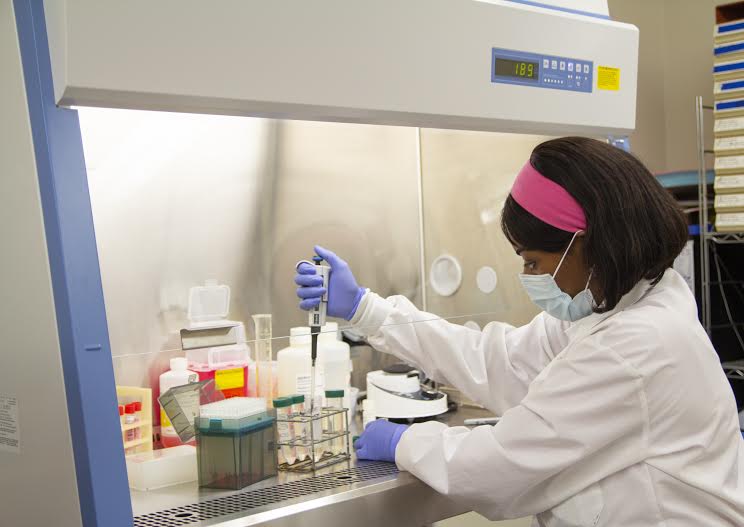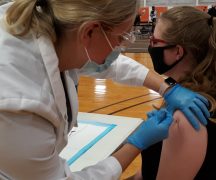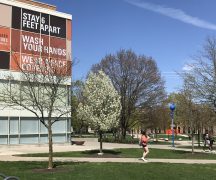Ohio Capital Journal
Despite a slow tapering of new caseloads, Ohioans continue to contract COVID-19 by the thousands.
In the closing week of 2020, state data shows about 60 Ohioans on average died from COVID-19. On the three worst days of December, more than 100 Ohioans died of the new disease.
At least 10,518 Ohioans have died of COVID-19 since March.
Most measurements of the pandemic besides deaths depict a virus down from a staggering December peak, yet still spreading at five to six times the rates seen in the Summer.
For instance, Thursday’s seven-day moving average of new cases sits just above 6,000 per day. That’s down from about 12,500 in mid-December, but well beyond a July peak closer to 1,300 new cases per day.
“The fact that it’s stabilizing is only part of the story — it’s stabilizing at very high levels,” said Dr. William Hanage, an epidemiologist at Harvard’s T.H. Chan School of Public Health, of the national picture on a call with reporters Thursday.
About 850,000 Ohioans have contracted COVID-19 during the pandemic, per state data. However, this is likely an underestimation given the likelihood of asymptomatic cases running their course undetected. Serologic data collected by the Ohio Department of Health in July suggests the case count at the time was a threefold underestimation.
“Out of any 200 Ohioans, at least 1 has tested positive for COVID during the past two weeks,” Gov. Mike DeWine saidThursday.
About 3,406 Ohioans are currently hospitalized with COVID-19. This is well below peak levels of mid-December when hospitals feared staffing crises as caregivers contracted the virus.
In July, when this number passed 1,100 ODH officials warned in a news release warned the new peak reflected the “severity and scope” of the pandemic.
More than 44,000 Ohioans have been hospitalized with COVID-19.
***
Also from Ohio Capital Journal:
Ohio to boost rapid, at-home coronavirus testing
As Ohio struggles with a painfully limited supply of coronavirus vaccine, it is spending $50 million on rapid, at-home tests in order to quickly detect hot spots as they emerge.
Gov. Mike DeWine on Thursday announced the deal to purchase 2 million of the BinaxNow tests manufactured by Abbott Laboratories. A digital health platform called eMed will remotely coach Ohioans on how to test themselves.
The tests are being purchased as the prospect of increased vaccine production appears to be at least as far off as March, when it is hoped that a single-dose vaccine made by Johnson & Johnson will receive regulatory approval. The New York Times reported Thursday that several others are in the pipeline behind the Johnson & Johnson vaccine and could get approval — and dramatically increase vaccine availability — this summer.
But at the current rate of production, it appears that non-priority Ohioans won’t be able to get the vaccine until well after that. READ MORE
Teachers unions push DeWine to support schools without ‘coerced preconditions’
Eight teachers’ unions throughout the state are pushing Gov. Mike DeWine to rethink his timeline for school reopening and vaccine distribution.
In a joint statement distributed by the Ohio Federation of Teachers and signed by the presidents of the unions in Akron, Canton, Cincinnati, Cleveland, Columbus, Dayton, Toledo and Youngstown, the leaders expressed disappointment with DeWine’s plan, saying his administration is using the vaccine “as a bargaining chip.”
“While we expect there will be no consequences for schools that fail to meet this commitment, that doesn’t mean the Governor isn’t harming communities with this action,” the statement reads. “Parents across the state now have unrealistic expectations for a March 1 reopening that simply will not be possible in many school districts.”
The statement is in response of recent statements from DeWine on early-stage plans to reopen schools. While vaccinations for K-12 personnel is set to begin February 1, the governor’s administration sent a survey to school districts asking if they would be willing to agree to reopen schools by March 1, thus opening the door to vaccination. READ MORE





